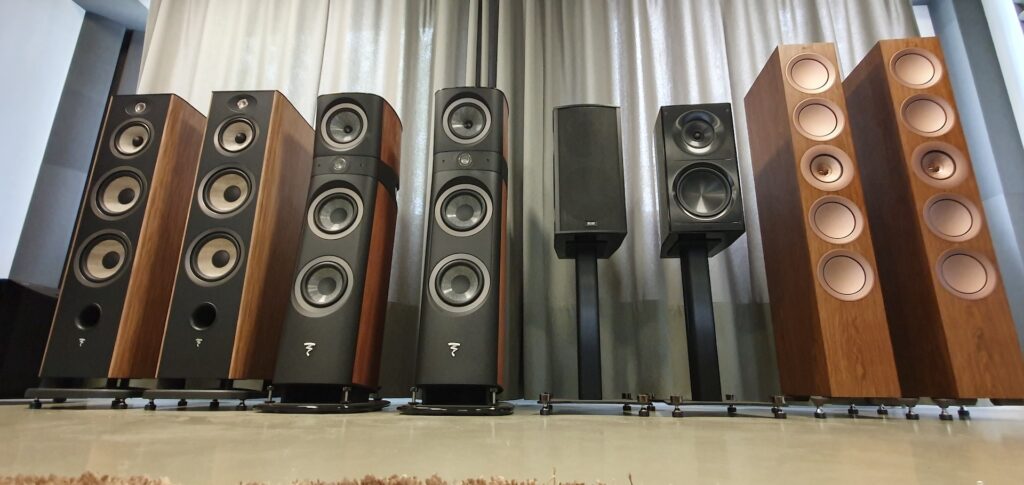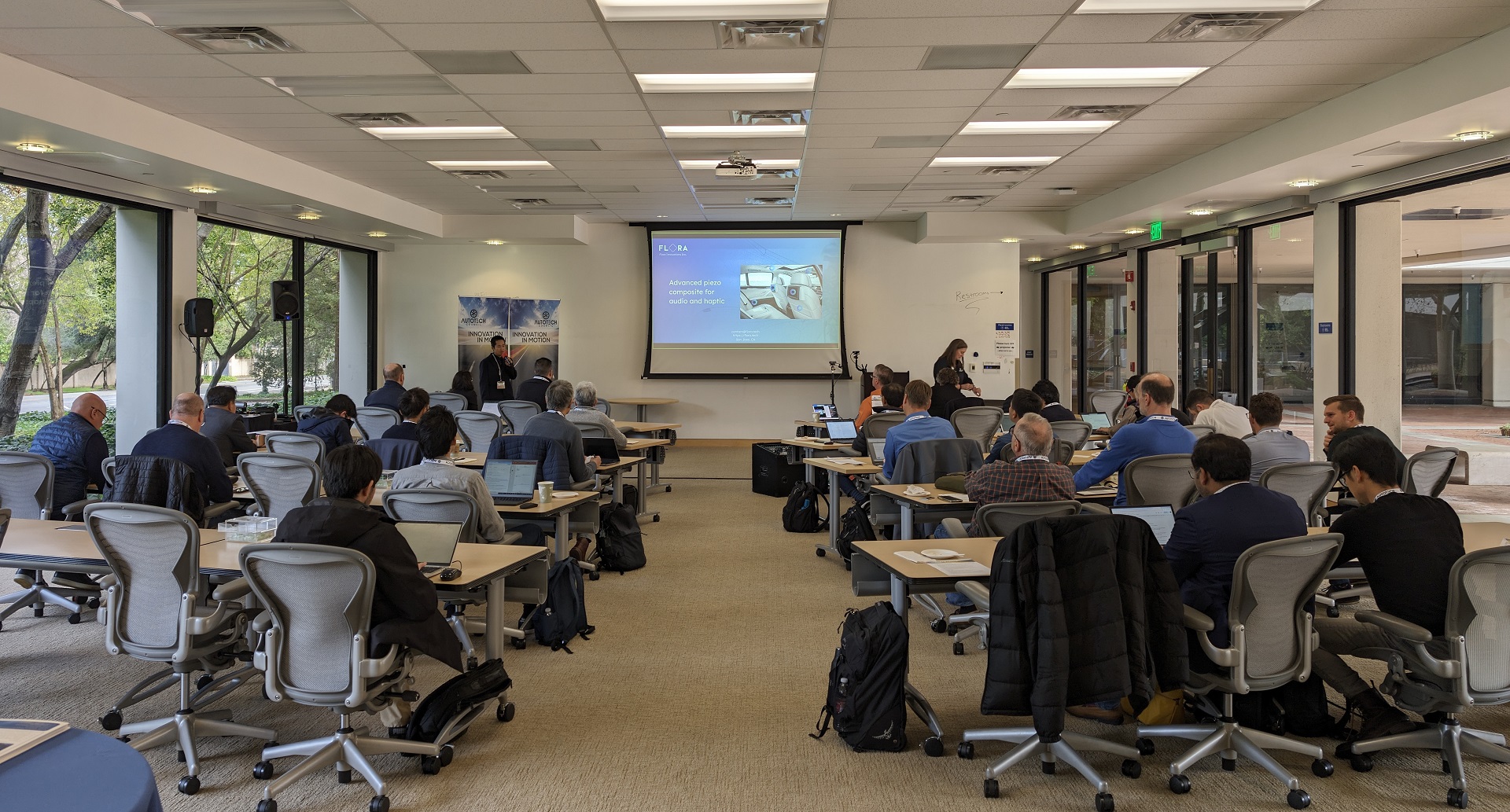Electrodynamic speakers

Electrodynamic (cone) speakers are the most common type of loudspeaker and use a diaphragm, a voice coil, and a magnet to produce sound. The cone vibrates in response to the electrical signal sent through the voice coil, creating sound waves. As a cone has a very high bending stiffness (compared to a flat diaphragm), the cone is designed to move like a piston. These speakers are known for their wide frequency response, making them suitable for a range of applications. They are also affordable. Unfortunately, electrodynamic speakers can be quite large, heavy, which can make them difficult to move or install in certain locations. Moreover, they are not as efficient at low volumes, which can impact their performance in smaller rooms or quieter listening environments.
Electrostatic speakers

Electrostatic speakers use a thin, flat diaphragm suspended between two charged metal plates. When an electrical signal is applied to the plates, the diaphragm vibrates, producing sound waves. These speakers are famous for their accuracy and transparency, making them popular in high-end audio systems. However, high quality electrostatic speakers can be challenging to manufacture and are often more expensive than other types of loudspeakers. They usually require a high voltage to operate, typically between 2,000 and 10,000 volts. This voltage requirement can make electrostatic speakers dangerous to handle, and it can also limit their practical applications.
Ribbon speakers

Ribbon loudspeakers are a type of planar magnetic speaker that uses a thin ribbon-like conductor as the diaphragm to produce sound. The ribbon is suspended in a magnetic field and vibrates when an electric current is passed through it. Due to their lightweight and low-mass diaphragm, ribbon speakers have fast transient response and excellent high-frequency extension. They also have a wide and even dispersion pattern, making them suitable for use in larger listening rooms. However, ribbon speakers can be relatively expensive and require a high-quality amplifier to drive them properly. Additionally, they may not produce as much bass as other types of speakers.
Piezo speakers

The conventional piezo speaker uses piezoelectric materials to generate sound and typically consists of a piezoelectric disc glued to a metal substrate. These structures vibrate when voltage is applied, producing sound waves. Due to their small and lightweight design, piezo speakers are ideal for use in portable devices that require a low-power speaker. They are also cost-effective as they are efficient at converting electrical energy into sound. However, they have limited frequency response and may produce lower-quality sound compared to other speakers. Overall, piezo speakers are suitable for applications that require compact, low-cost speakers, but may not meet the high-fidelity audio requirements of more demanding applications.
Flat panel speakers

Flat panel speakers, also known as distributed mode loudspeakers or DMLs, consist of one or more exciters attached to a thin flat panel. These exciters transfer vibration force to the panel and turn it into a sound radiator. One significant advantage of flat panel speakers is their ability to produce a diffuse sound field, resulting in a more natural and immersive listening experience. In contrast, traditional cone speakers produce directional sound waves that can cause uneven sound distribution in a room. Additionally, flat panel speakers have compact size and thin profile, making them ideal for wall-mounting or placement on shelves. They can be driven by either electrodynamic or piezo exciters, with the Dragonfly™ being the world’s first piezo exciter for full-range flat panel speakers, opening up new possibilities for various applications.
Conclusion
In conclusion, each type of loudspeaker has its own unique advantages and disadvantages. Electrodynamic speakers are versatile and widely used, while electrostatic speakers offer high accuracy and transparency. Flat panel speakers are compact and suitable for home theater setups, while piezo speakers are durable and have a high-frequency response. It’s essential to choose the right type of loudspeaker for your specific audio needs and application.









